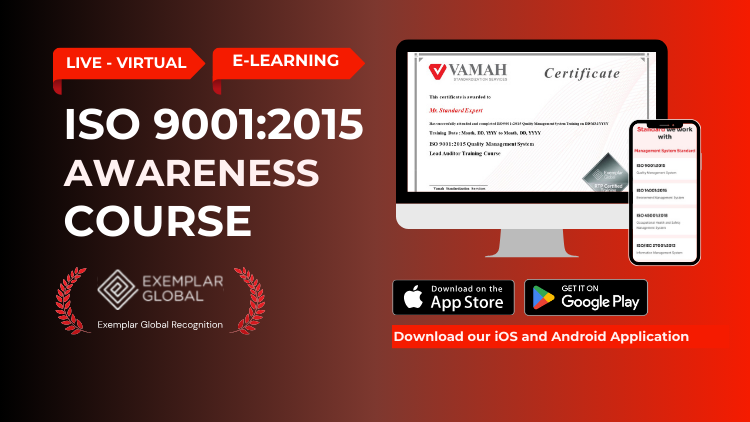ISO 9001:2015
ISO 9001 is an internationally recognized standard for quality management systems. It provides a framework for organizations to consistently meet customer and regulatory requirements while enhancing customer satisfaction through continuous improvement processes. ISO 9001 applies to any organization, regardless of size, industry, or nature of business.
Trainings
Our trainings are developed for ISO 9001:2015 with various level such as Awareness, Internal Auditor, Lead Auditor and Implementation.
ISO 9001:2015 Awareness Training
Our Awareness Training introduces participants to the fundamental concepts of ISO 9001. This course covers the importance of quality management, key principles of the ISO 900:2015 standard, and the benefits of implementing a QMS. It is ideal for employees at all levels who need a basic understanding of ISO 9001.

ISO 9001:2015 Internal Auditor Training

ISO 9001:2015 Lead Auditor Training

ISO 9001:2015 Implementation Training

DIY Templates
- Cost-Effective: Save on consultancy fees.
- Time-Saving: Ready-made documents for quick implementation.
- Comprehensive: Includes all necessary documents.
- Customizable: Easily adapt to your organization’s needs.
- Expertly Crafted: Developed by industry professionals.
- Streamlined Process: Clear instructions reduce the learning curve for team members.
Implement ISO 9001:2015 with DIY Templates
Our document kit includes quality manuals, detailed procedures, step-by-step work instructions, standardized forms, annexures, and clear policies. These resources are designed to meet customer requirements, enhance operational efficiency, and promote continuous improvement.
ISO 9001:2015 Consultancy
At VamahSS, we assist organizations in navigating the complexities of ISO standards implementation, certification, and continual improvement. Recognizing that every organization is unique, we provide tailored solutions to fit specific needs, making us your trusted partner in achieving ISO certification. Whether starting your ISO journey or optimizing existing processes, our consultancy services are designed to meet your objectives.We offer remote ISO consultancy services for various management system standards and accreditation standards. Choose between our two consulting options: online workshops or full project support tailored to your requirements. Contact us today to start your path to ISO certification.
Contact Us
Quality Management System
ISO 9001:2015 is a globally recognized standard that defines the requirements for a Quality Management System (QMS). This guide provides a comprehensive overview of ISO 9001, its importance, implementation process, and business impact.
What is ISO 9001?
Why is ISO 9001 Important?
What is the Current ISO 9001 Standard?
What is ISO 9001:2008?
ISO 9000 vs ISO 9001
What is a Quality Management System (QMS)?
ISO 9001:2015 is a globally recognized standard for quality management systems (QMS). The standard is structured into 10 sections, or clauses, with the last seven containing the specific requirements for a QMS. These requirements ensure a systematic approach to managing organizational processes, enhancing customer satisfaction, and driving continuous improvement. Here’s a detailed explanation of these clauses:
Clause 4: Context of the Organization
Clause 5: Leadership
Clause 6: Planning
Clause 7: Support
Clause 8: Operation
Clause 9: Performance Evaluation
Clause 10: Improvement
By fostering a culture of continuous improvement, organizations can enhance their processes, products, and services.
-1.png?width=808&height=197&name=vamah(1)-1.png)